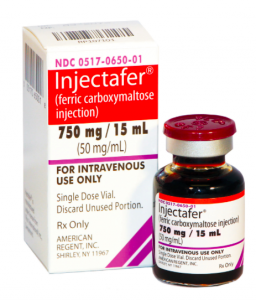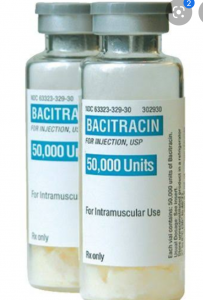Month: February 2020
-
Elagolix Reduces Heavy Menstrual Bleeding in Women with Uterine Fibroids
Women with uterine fibroids who used elagolix (Orilissa) with add-back therapy saw a reduction in heavy menstrual bleeding. A study was conducted in US and evaluated the safety and efficacy of elagolix at a dose of 300 mg 2 times a day with hormonal add-back therapy in women with bleeding due to fibroids. The lead…
-
FDA Approves New Vaccine for Influenza A (H5N1)
The US Food and Drug Administration (FDA) has approved a novel vaccine to help protect patients as young as 6 months old against influenza A (H5N1), according to a press release from Seqirus. With approval, influenza A monovalent vaccine, adjuvanted (Audenz™) becomes the first-ever adjuvanted, cell-based influenza vaccine designed to protect against influenza A in…
-
Tramadol Use Shown to Increase Hip Fracture Risk in Older Adults
A common pain medication—once perceived a safer alternative to many other opioid therapies—is coming under fire once again after results of a recent study suggest tramadol use could negatively impact bone health in older adults. Less than a year after results of a Mayo Clinic study debunked the perception of tramadol as being less addictive than other pain medications,…
-
Safety alert: Safety Risks With Dietary Supplements Containing Cesium Salts
The FDA is warning consumers to avoid using dietary supplements containing cesium salts due to potential safety risks, according to an agency-issued alert. Although there are few dietary supplements with this ingredient currently on the market, the agency noted that consumers should be aware of the risks and avoid purchasing such products. Cesium salts, such…
-
41. Safety Signal Detection Methods – Data Mining approach
The major aim of Pharmacovigilance is signal detection (i.e., the identification of potential drug-event association that may be novel by virtue of their nature, severity and/or frequency). Currently, signal detection can be performed on a case-by-case basis (traditional approach, especially for Designated Medical Event – DMEs) or through automated procedures to support the clinical evaluation…
-

Safety alert: Injectafer-Induced Hypophosphatemia
Injectafer (ferric carboxymaltose) is an iron replacement injection approved by the FDA in 2013 for the treatment of iron deficiency anemia (IDA) in certain patients as an alternative to oral iron medications. Injectafer-induced hypophosphatemia (HPP) is an Injectafer side effect causing muscle weakness, fatigue, and severe nausea. In turn, these hypophosphatemia symptoms can lead to…
-
FDA update on Safety of sunscreen usage
Amount of sunscreen usage during peoples’ lifetime has substantially increased with the hike in the number of skin cancer cases over the years. To maintain the safety of several products containing sunscreen active ingredients, the Food and Drug Administration (FDA) proposed new rules in February of 2019. According to the rule, when such ingredients enter…
-
FDA approves 1st treatment for children with peanut allergies
Palforzia, a groundbreaking new drug, has just been approved by the Food and Drug Administration. The pill is meant for children who have severe reactions to peanuts and it works by helping to build tolerance to the nuts. Though it is not a cure but still marks a step forward in reducing allergic reactions for…
-

FDA request withdrawal of bacitracin injection
The U.S. Food and Drug Administration has requested that all current manufacturers of bacitracin for injection voluntarily withdraw their product from the market. Bacitracin for injection is currently FDA-approved to treat infants with pneumonia and empyema (a collection of pus in the space between the membranes lining the lungs) caused by staphylococci, a type of…